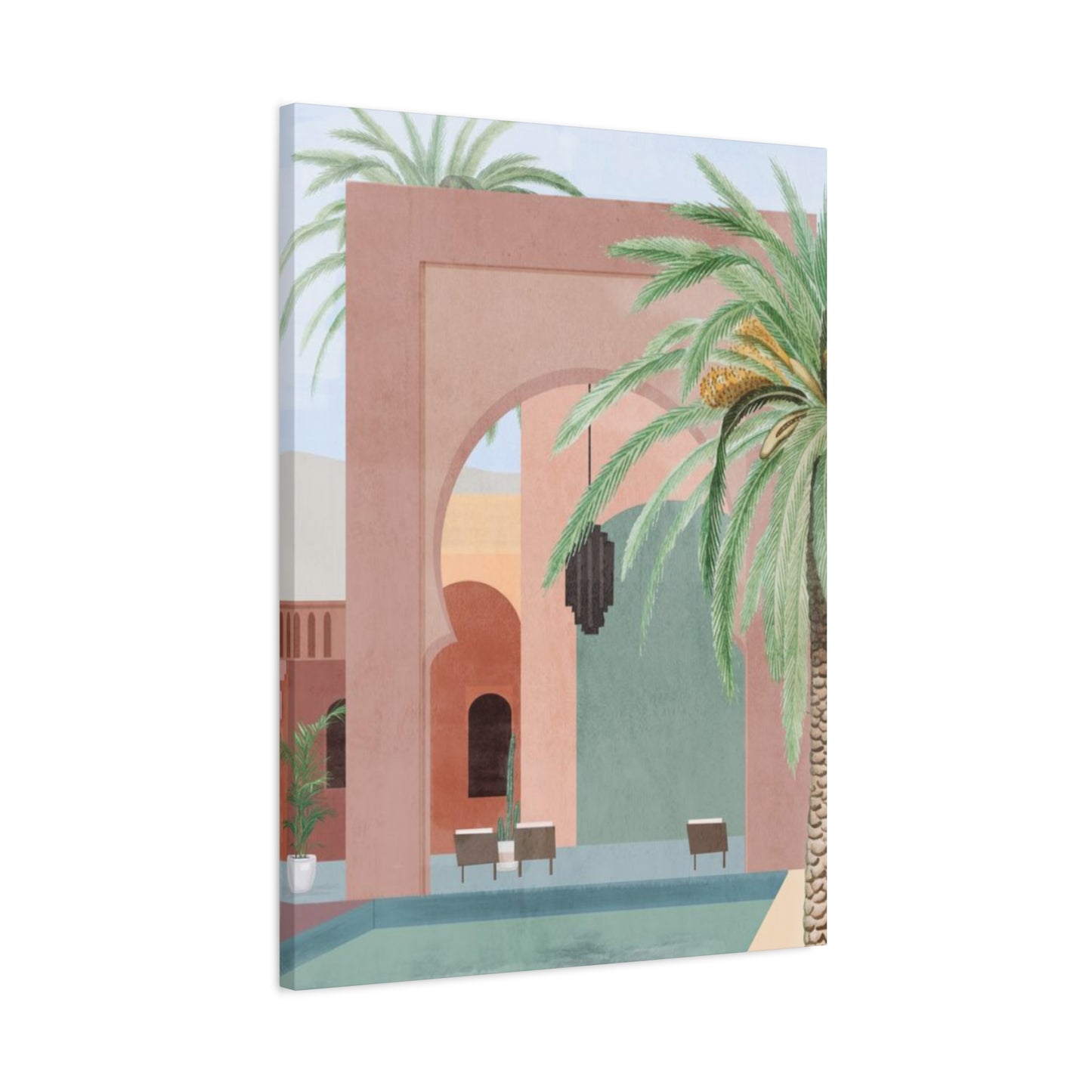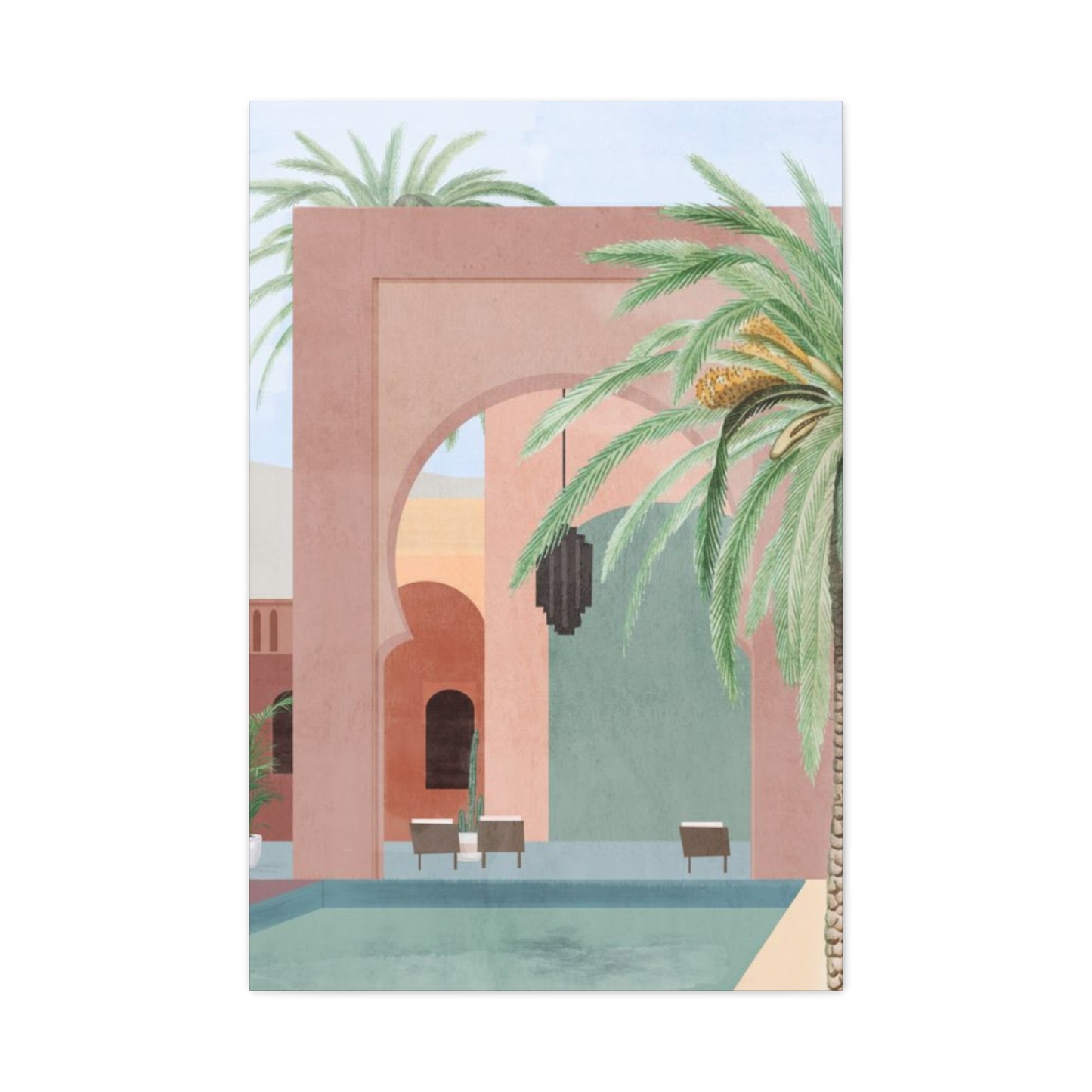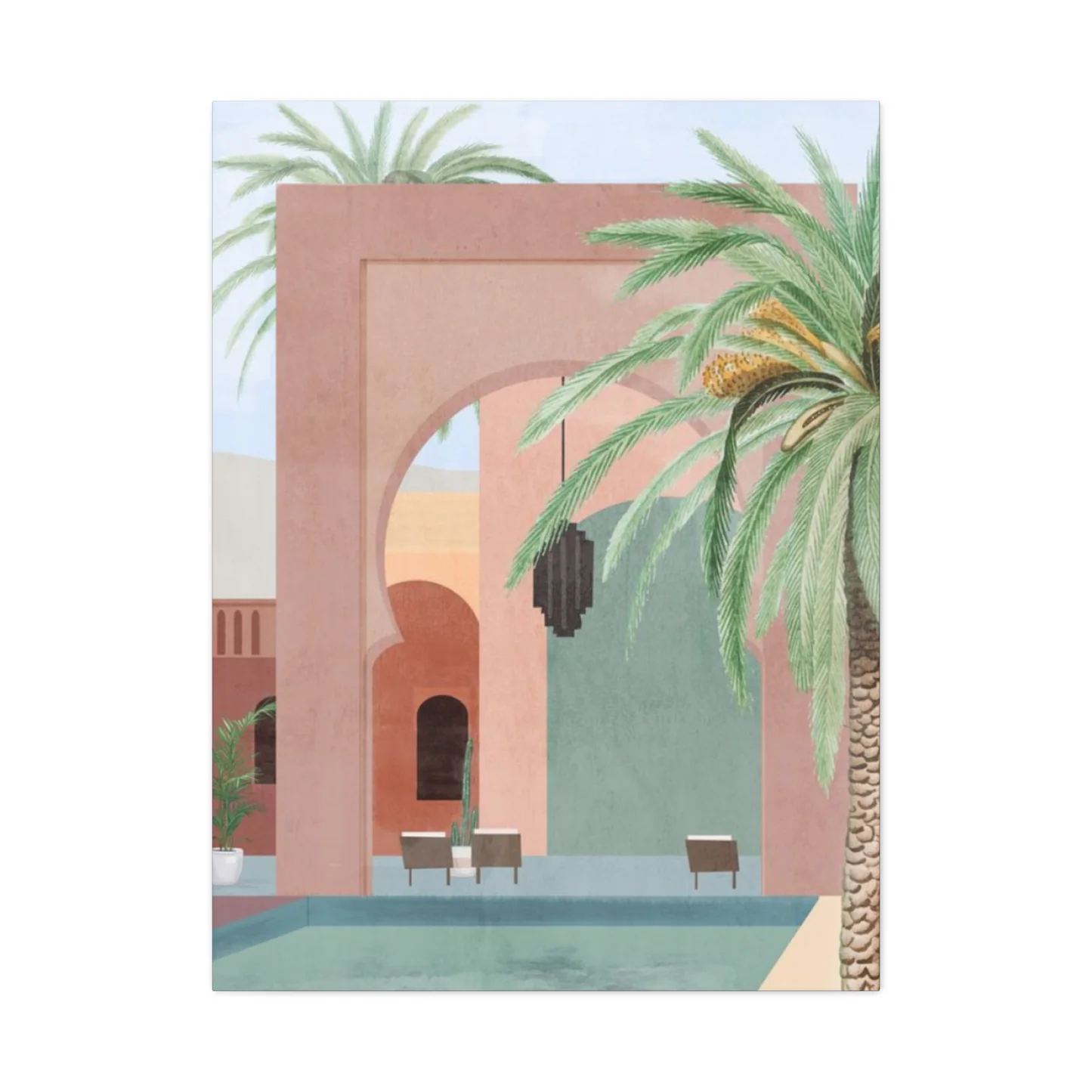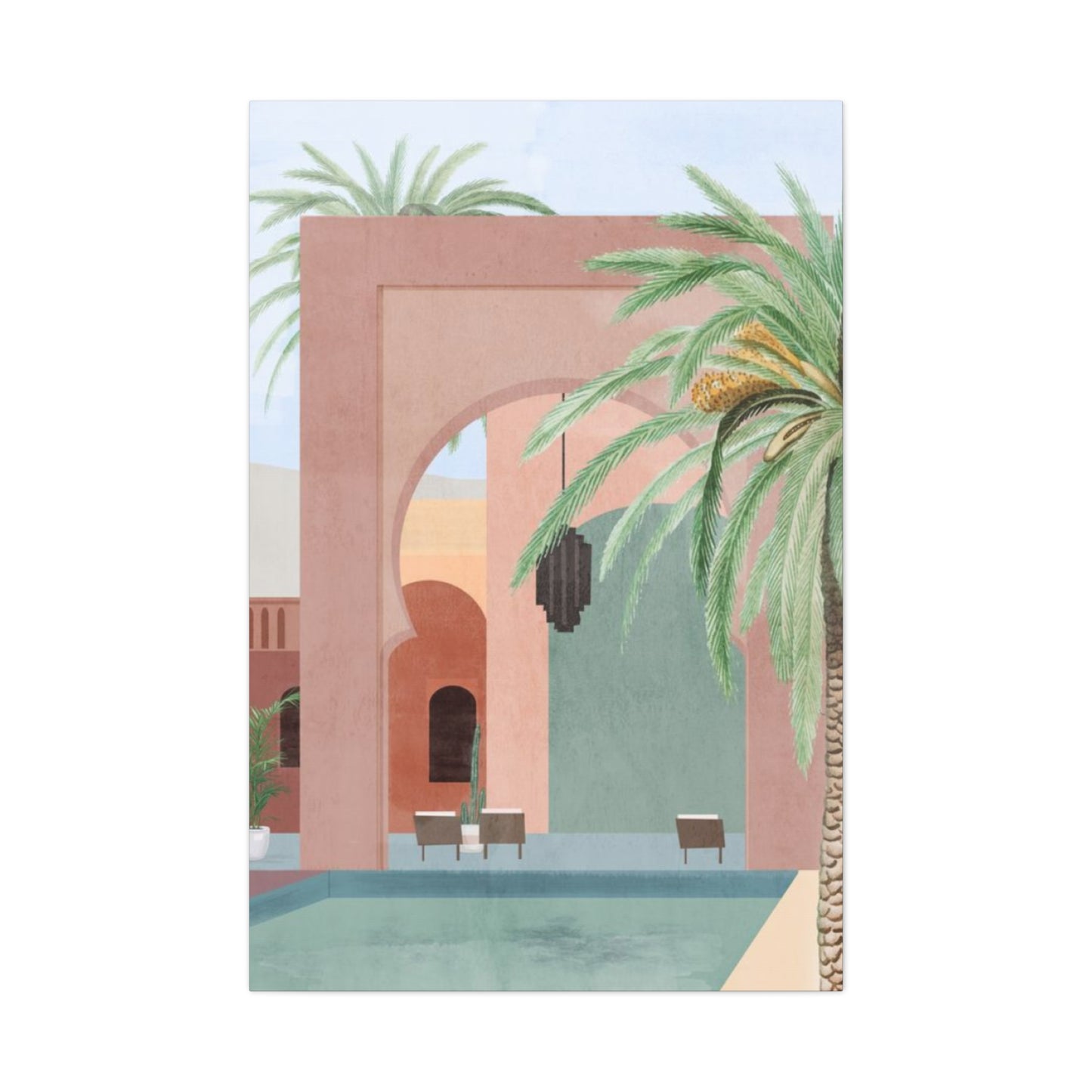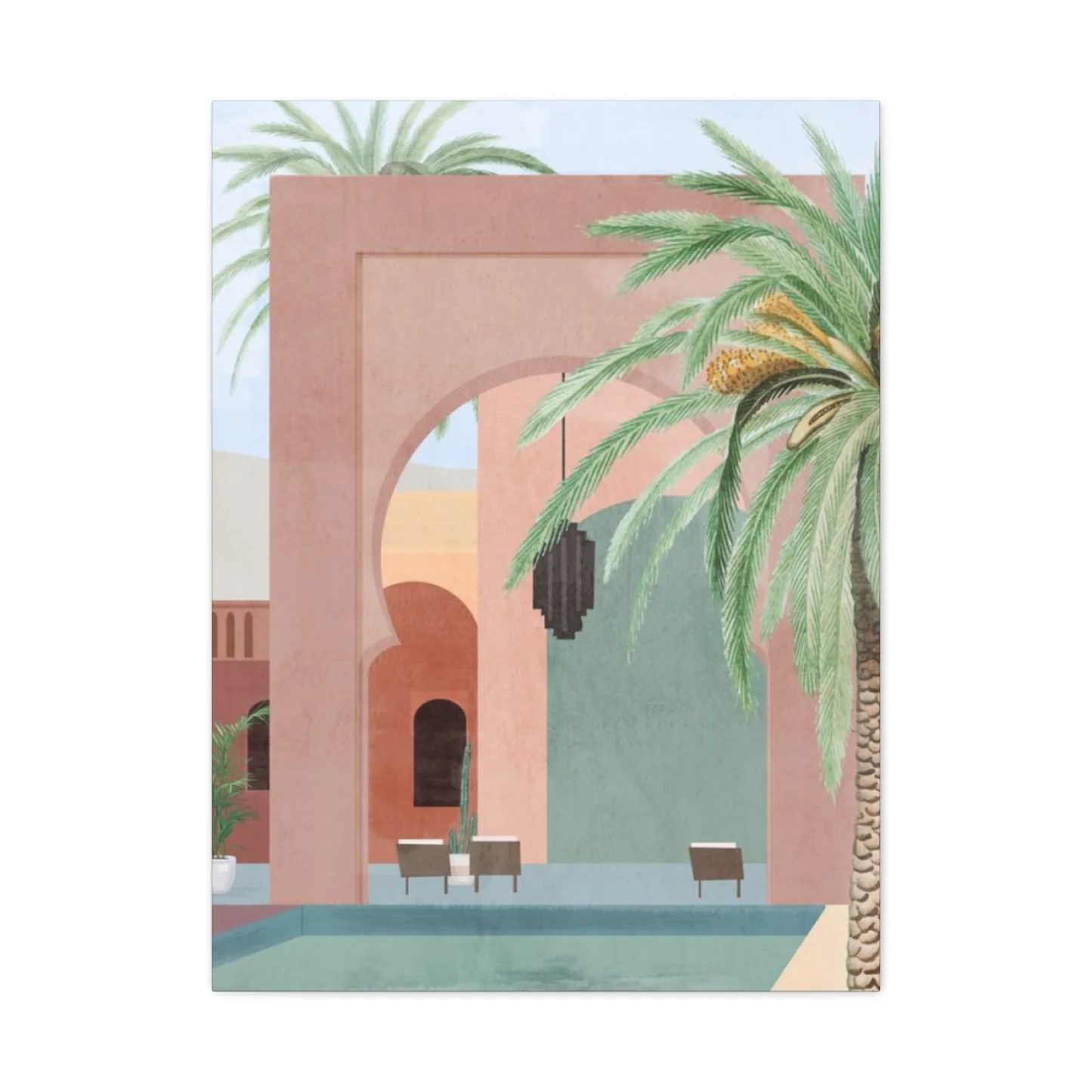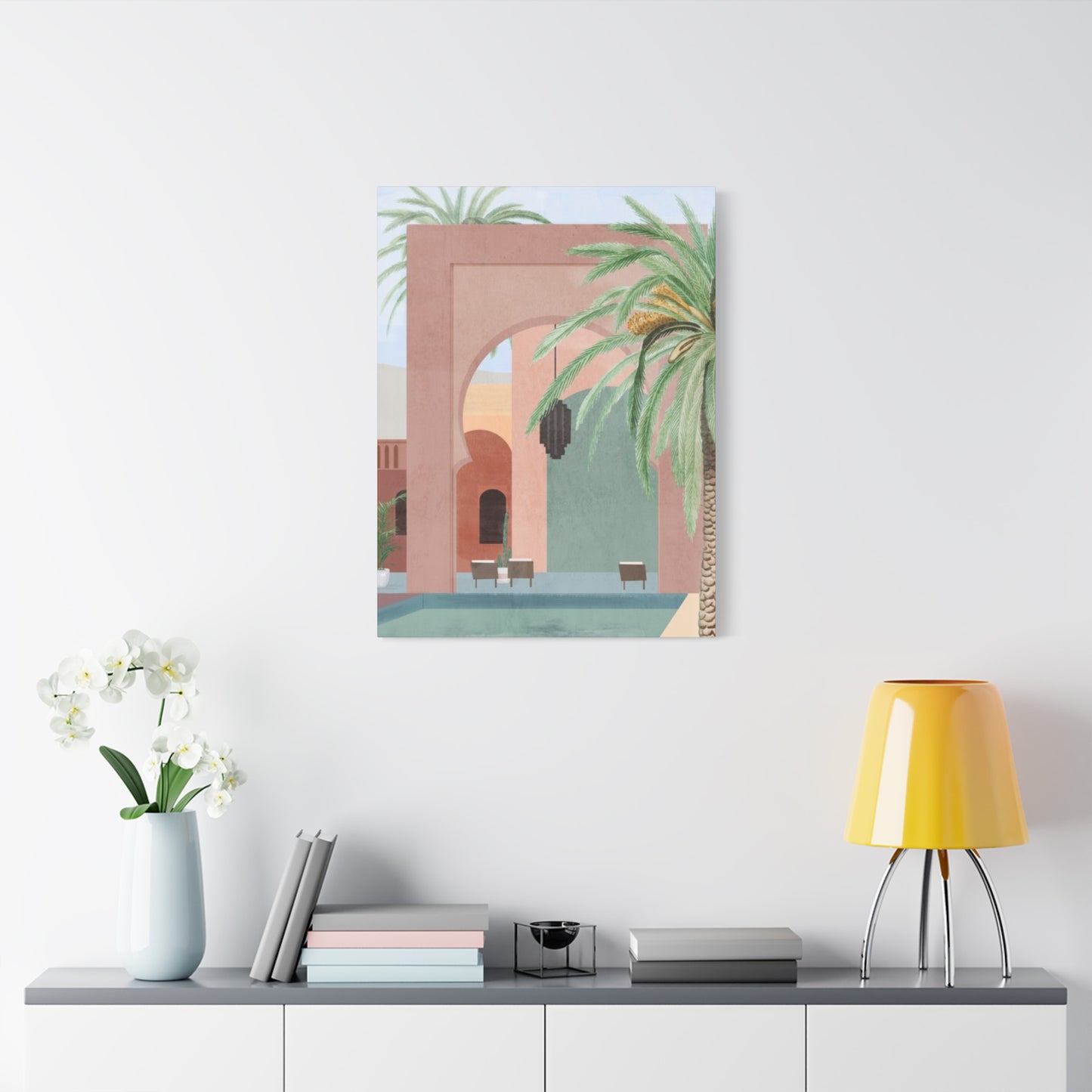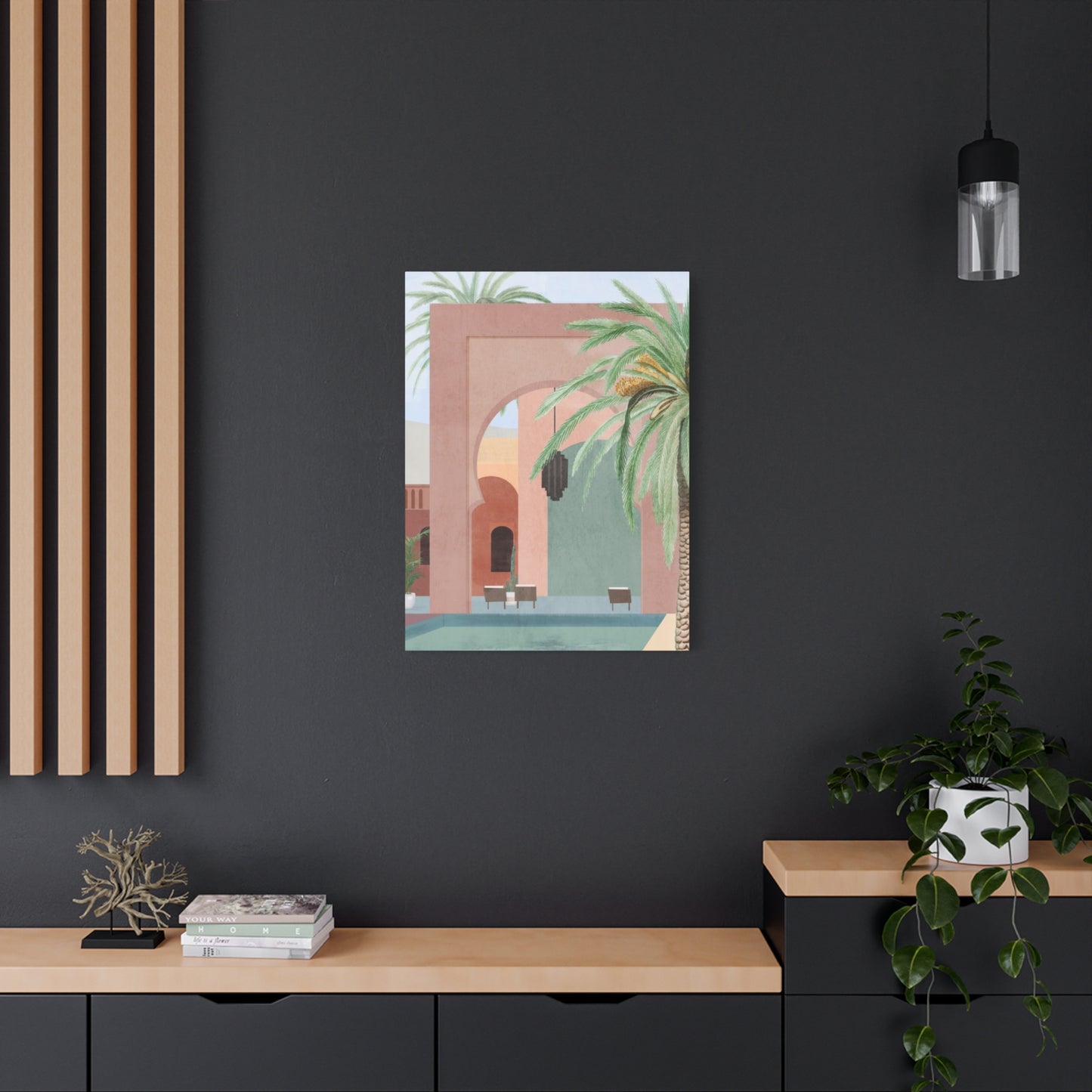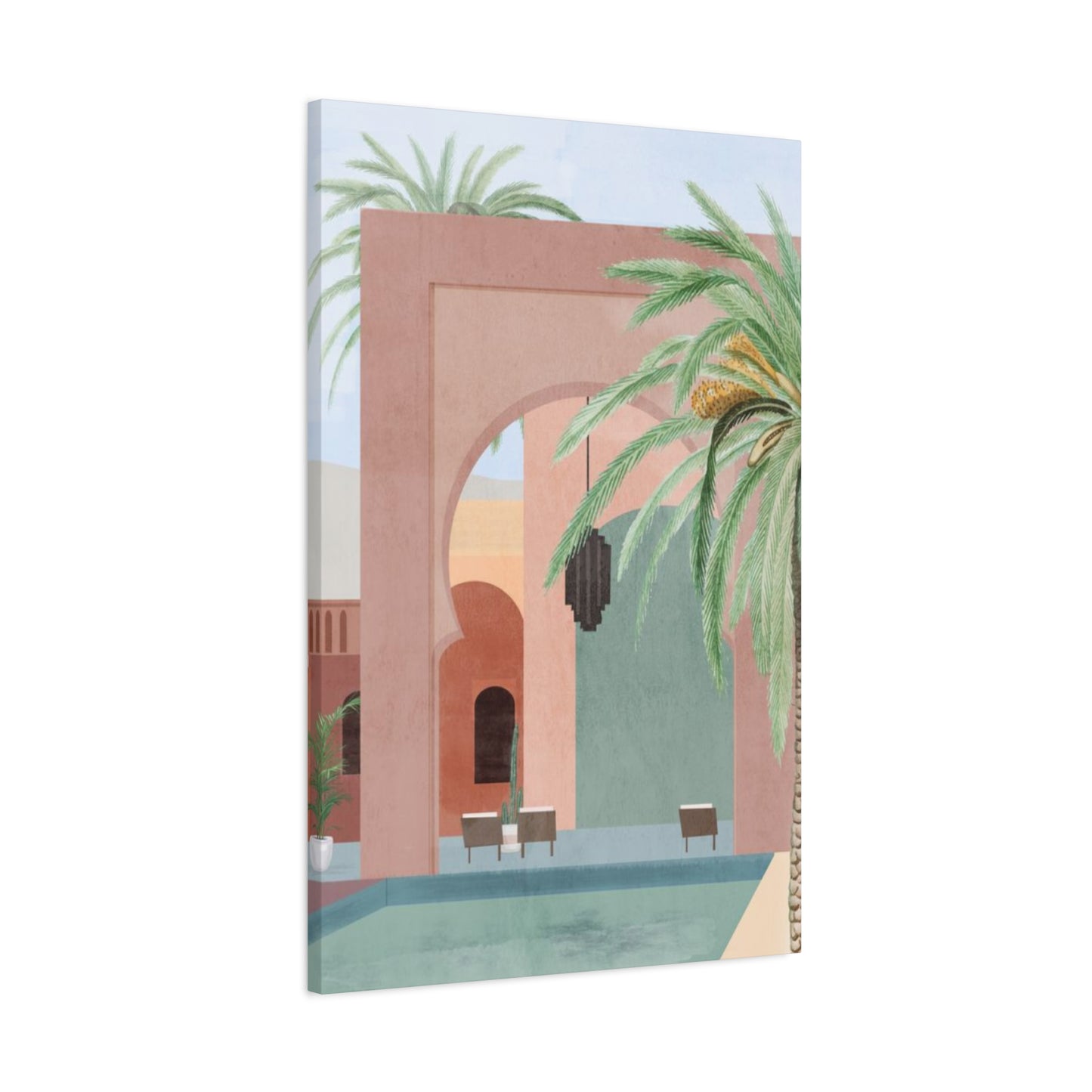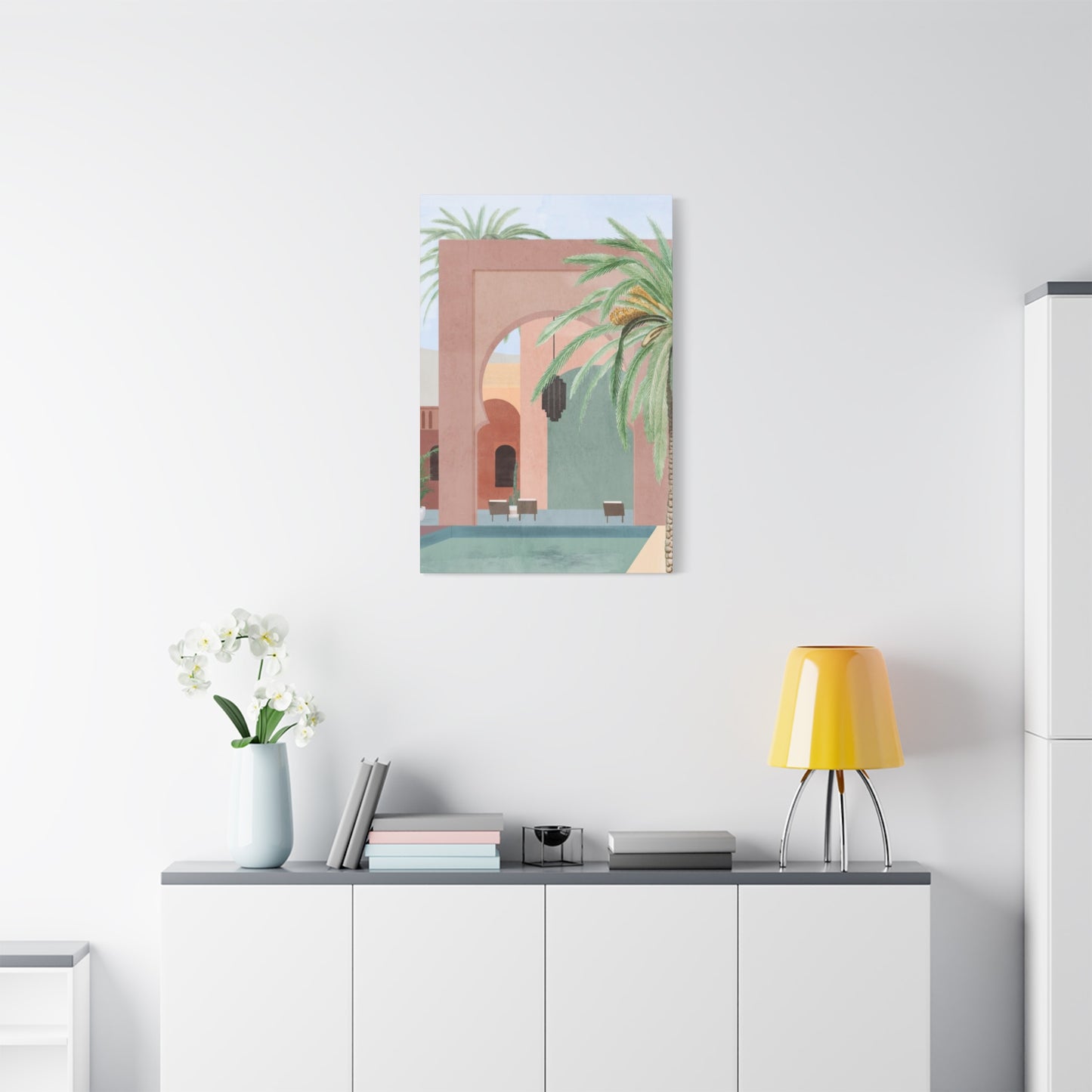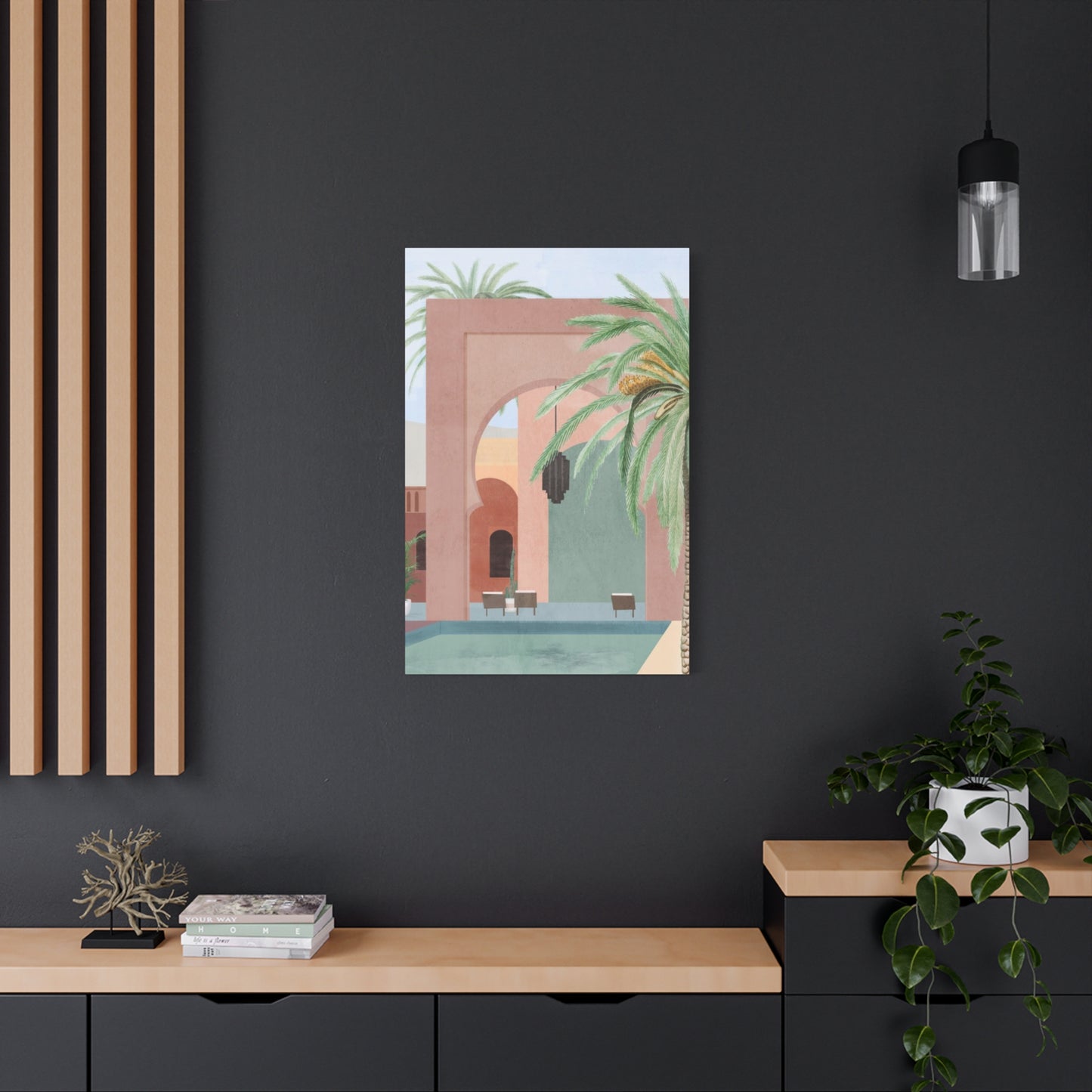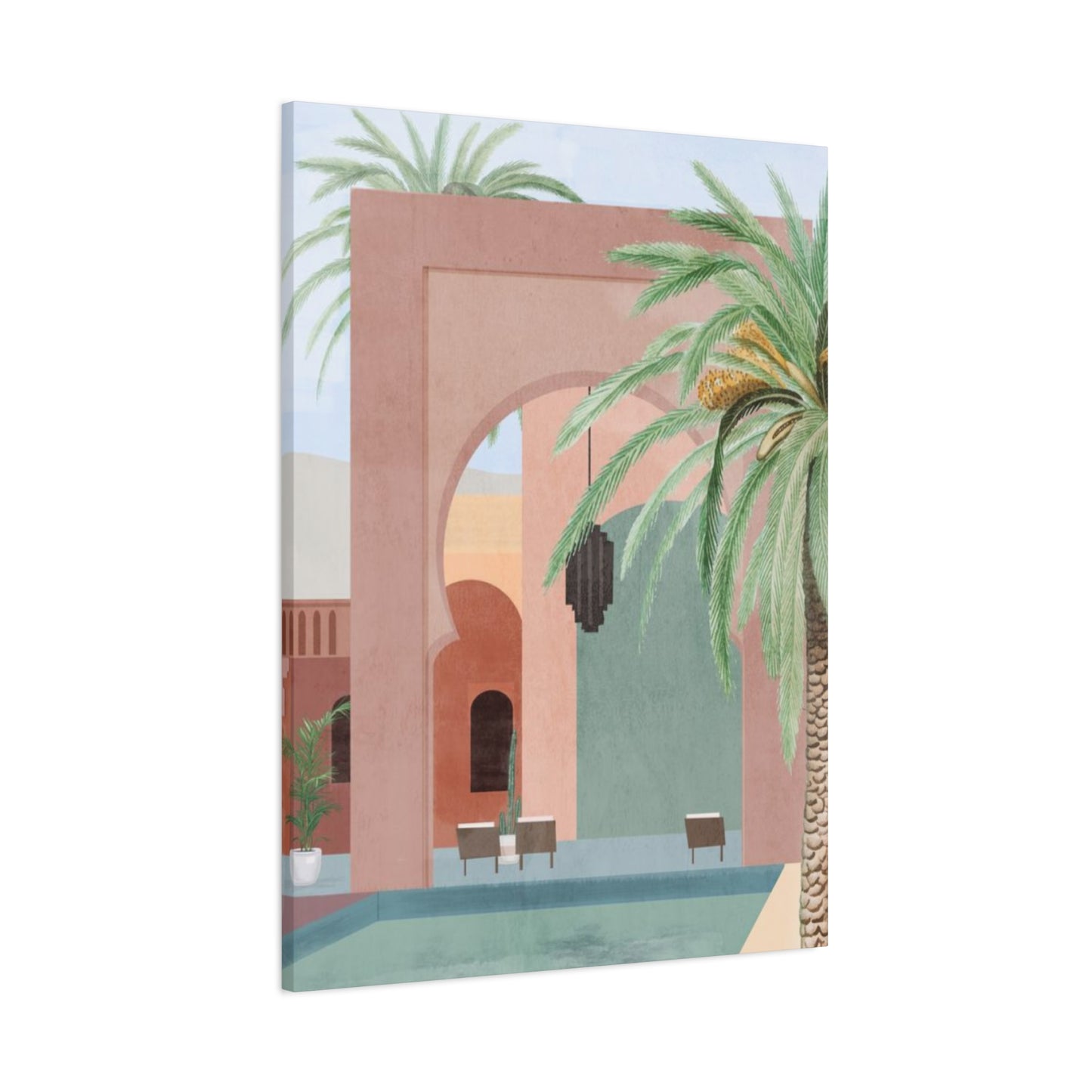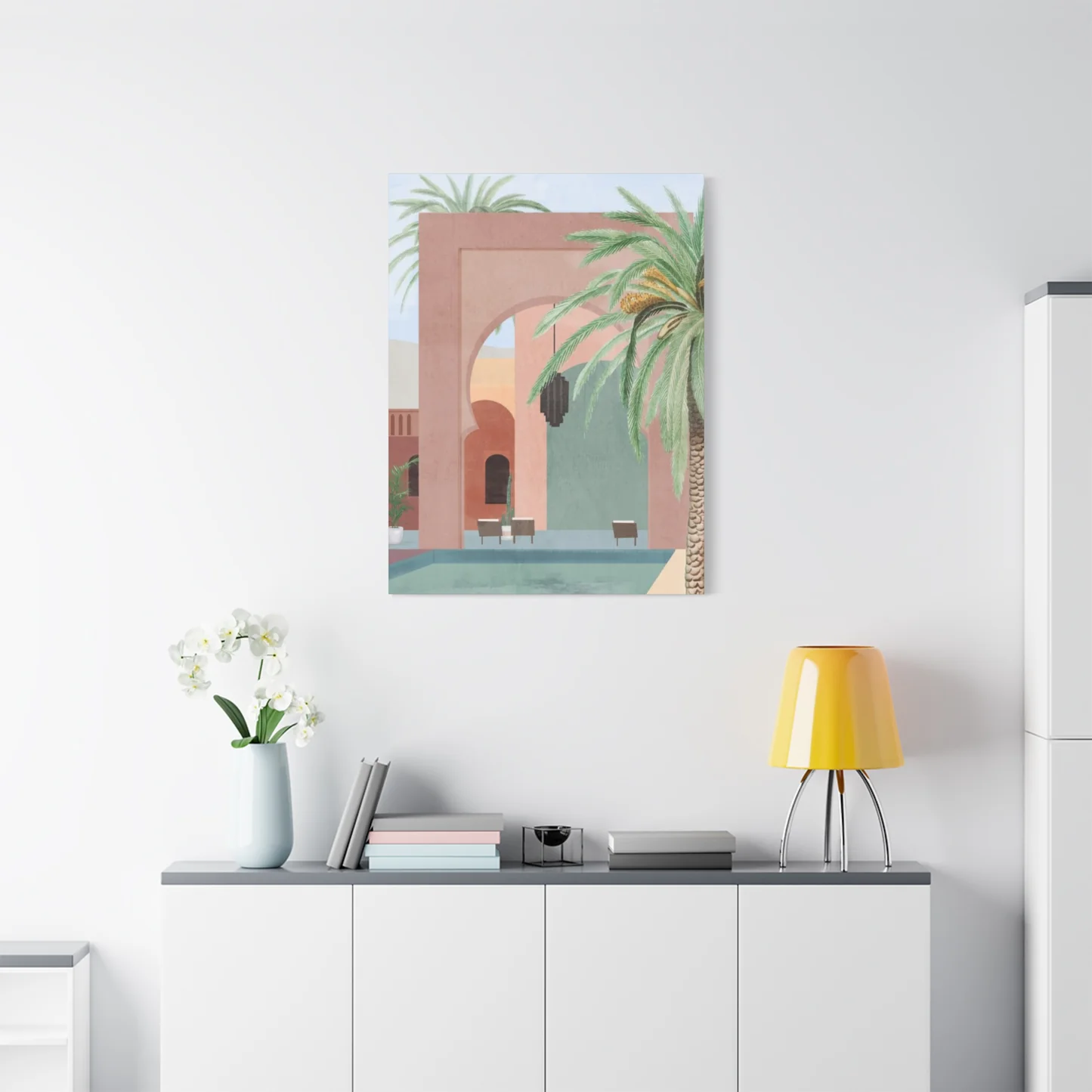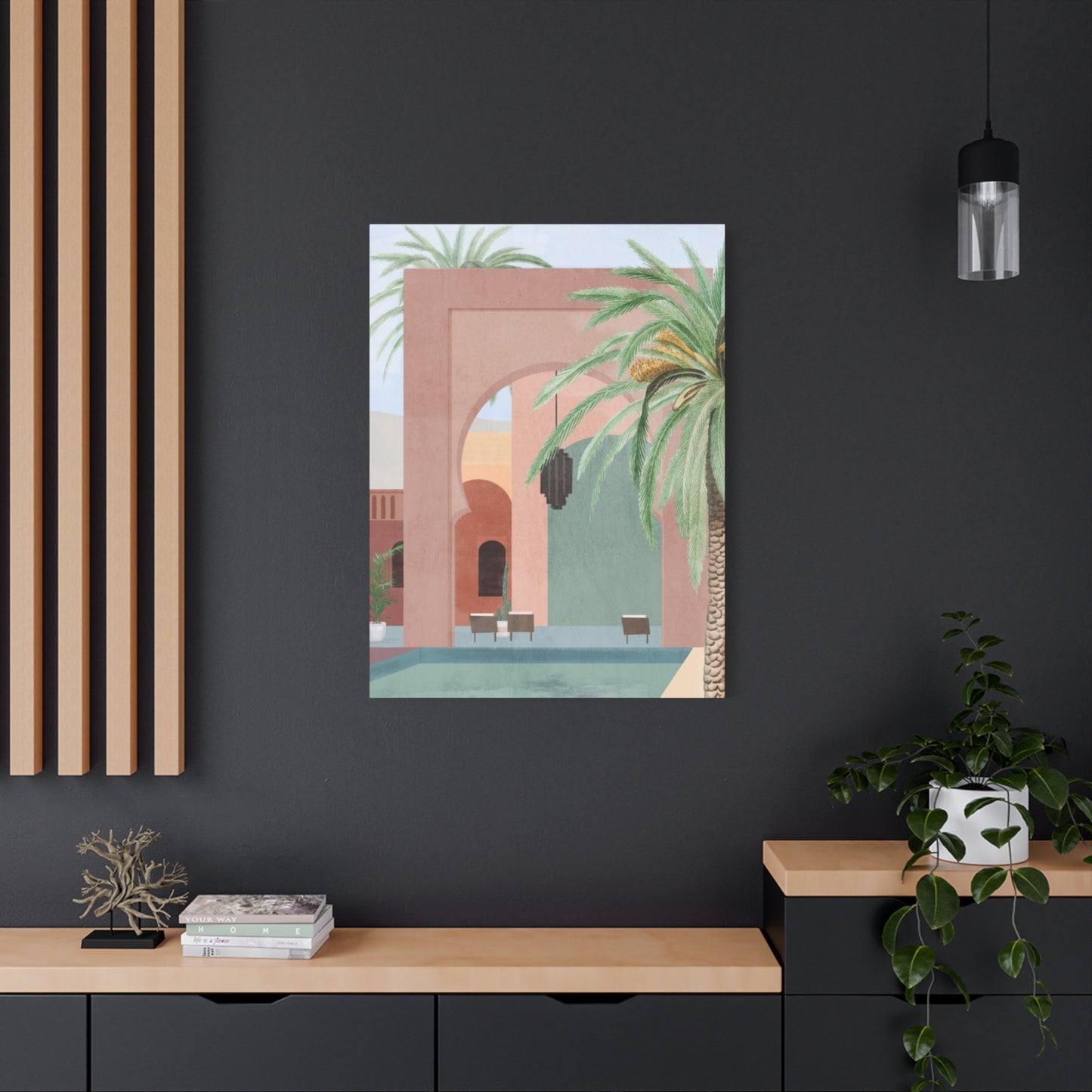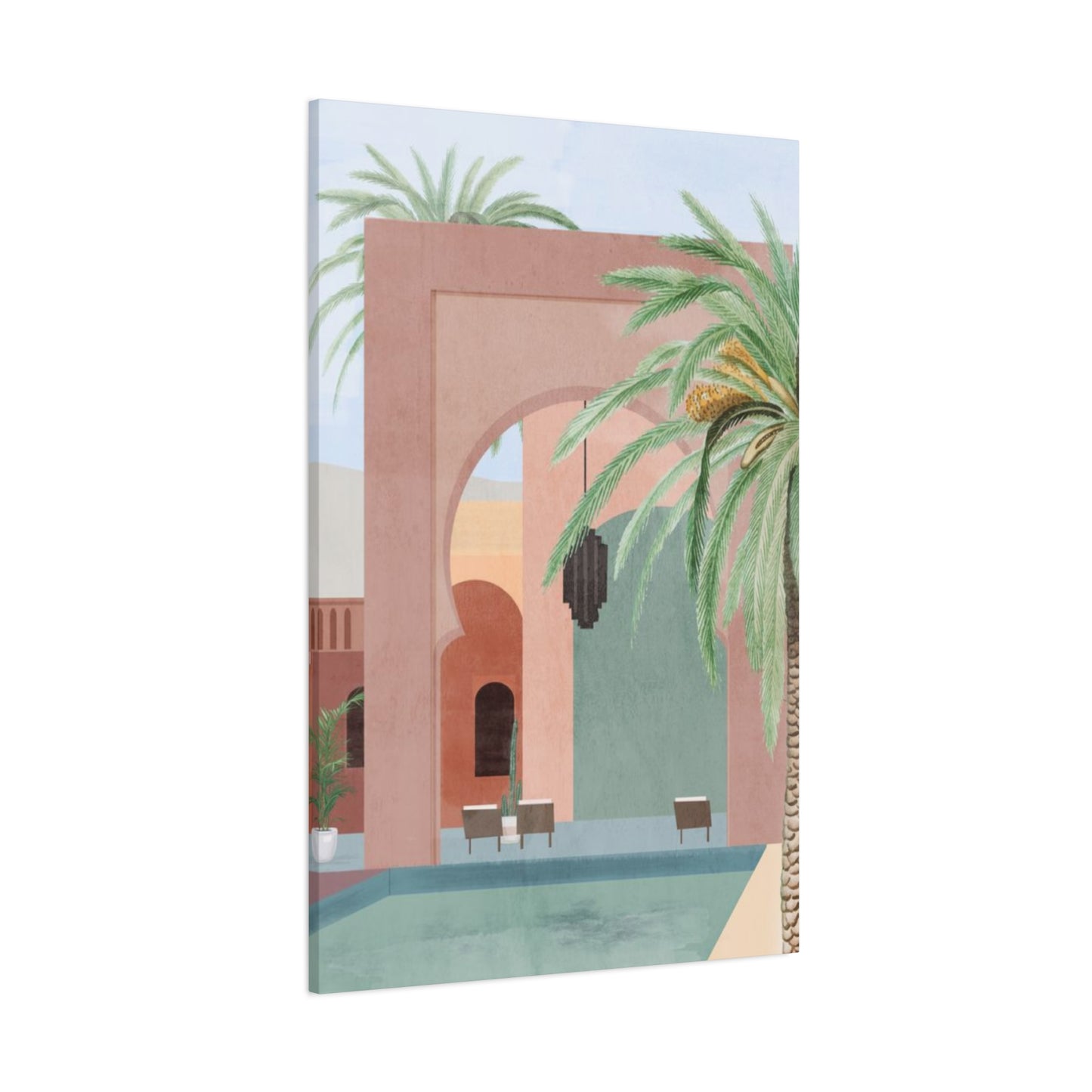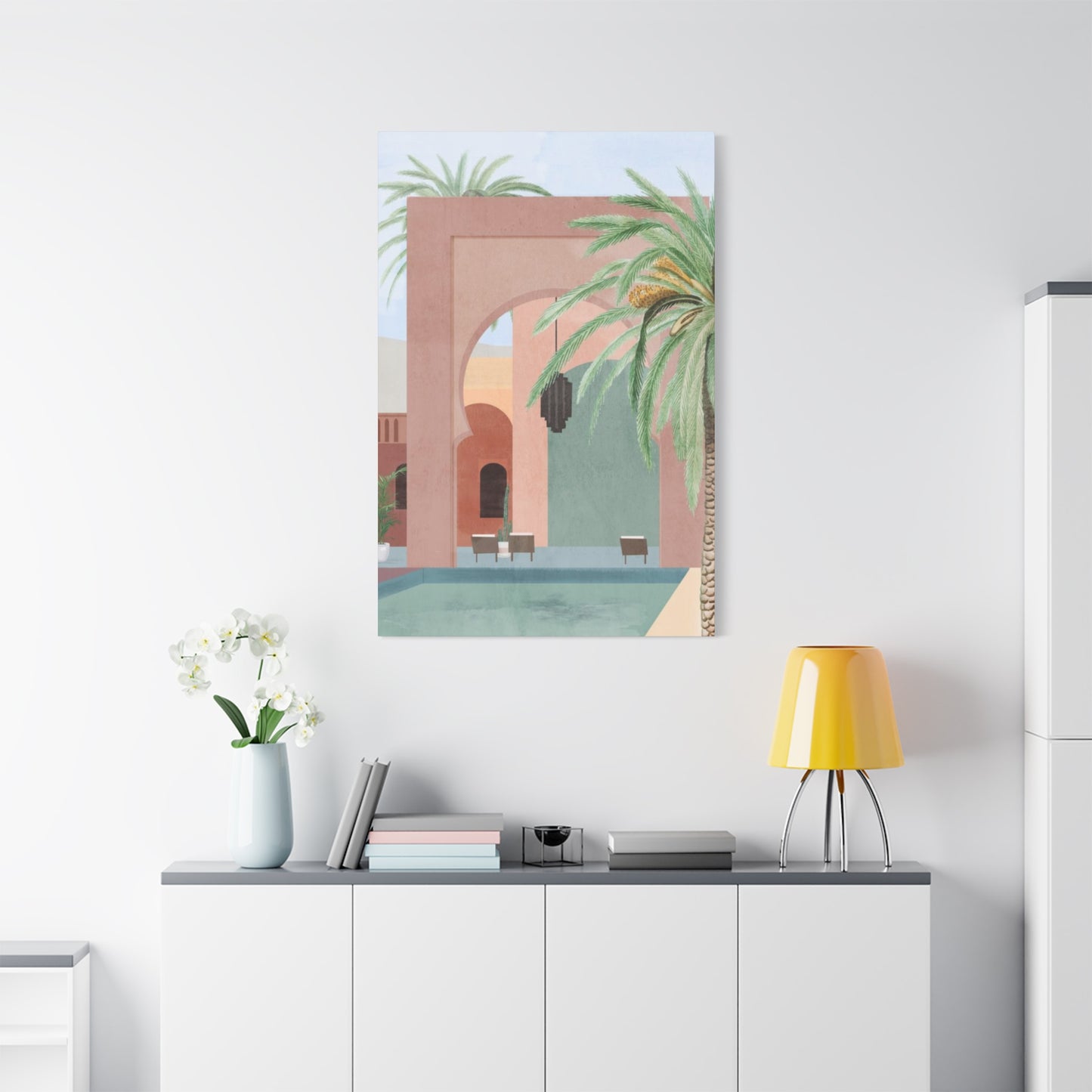Explore Moroccan Architecture: Beautiful Wall art Decor Inspired by the City
The enchanting allure of Morocco has captivated travelers, artists, and interior designers for centuries. From the bustling medinas of Marrakech to the azure coastlines of Essaouira, Morocco offers an endless tapestry of visual inspiration that translates beautifully into home decor. Moroccan canvas art has emerged as one of the most sophisticated ways to bring the magic of North Africa into contemporary living spaces, offering homeowners the opportunity to create stunning focal points that celebrate the rich architectural heritage and vibrant culture of this remarkable country.
The growing popularity of Moroccan-inspired interior design reflects our collective desire to create homes that tell stories, spaces that transport us to distant lands and evoke memories of wanderlust. When we incorporate authentic Moroccan canvas prints into our living spaces, we're not merely adding decorative elements; we're inviting the spirit of ancient souks, majestic palaces, and timeless craftsmanship into our daily lives. These artistic pieces serve as windows to a world where intricate geometric patterns dance alongside warm earth tones, where centuries-old architecture stands as testament to human creativity and ingenuity.
Moroccan Urban Landscapes on Canvas
The urban landscapes of Morocco present some of the most visually striking subjects for canvas art. Cities like Fez, Meknes, and Rabat offer photographers and artists an incredible diversity of architectural styles, from medieval Islamic structures to French colonial buildings, all bathed in the distinctive North African light that gives these urban scenes their magical quality. When translated onto canvas, these cityscapes become powerful statement pieces that can anchor entire room designs.
Moroccan urban canvas art typically features the characteristic red clay buildings of Marrakech, the blue-washed walls of Chefchaouen, or the golden stone structures of ancient medinas. These pieces work exceptionally well in modern homes because they bridge the gap between contemporary design sensibilities and timeless architectural beauty. The warm color palettes inherent in Moroccan cityscapes complement both neutral and bold interior schemes, making them versatile choices for homeowners seeking to add depth and character to their spaces.
The appeal of urban Moroccan canvas prints lies in their ability to capture not just buildings and streets, but the very essence of Moroccan city life. These artworks often include glimpses of daily activities, traditional markets, and the interplay of light and shadow that defines the Moroccan urban experience. Whether depicting the narrow alleyways of ancient medinas or the grand squares where storytellers and musicians gather, these canvas prints bring the energy and romance of Moroccan cities directly into your home.
When selecting urban landscape canvas art from Morocco, consider pieces that showcase the architectural diversity of different regions. The imperial cities each have their own distinct character and color palette, offering opportunities to create cohesive collections or striking individual statements. The key is choosing pieces that resonate with your personal connection to Morocco, whether that comes from travel experiences, cultural appreciation, or simply an aesthetic attraction to the beauty of North African urban design.
Innovative Moroccan Interior Design Concepts
Incorporating Moroccan wall decor into contemporary interiors requires a thoughtful approach that balances authenticity with modern design principles. The most successful Moroccan-inspired spaces are those that capture the essence of North African style without overwhelming the room with too many traditional elements. Canvas prints offer the perfect solution, providing a sophisticated way to introduce Moroccan aesthetics while maintaining the clean lines and uncluttered feel that characterizes contemporary interior design.
One innovative approach involves creating gallery walls that combine different sizes and styles of Moroccan canvas prints. This technique allows homeowners to tell a visual story about Morocco's diverse landscapes and architectural traditions while creating a dynamic focal point that draws the eye and sparks conversation. The key to successful gallery wall composition lies in choosing pieces that share common elements, such as color palette or artistic style, while varying in subject matter and scale.
Another contemporary approach to Moroccan wall decor involves using large-scale canvas prints as room dividers or backdrop elements. Oversized prints of Moroccan architecture or landscapes can serve as stunning focal points in open-plan living spaces, helping to define different areas while maintaining visual flow. This application works particularly well in loft-style apartments or homes with high ceilings, where the grandeur of Moroccan architecture can be fully appreciated.
The integration of Moroccan canvas art with modern furniture and accessories requires careful attention to color coordination and stylistic balance. The warm terracotta tones, deep blues, and golden hues typical of Moroccan art pair beautifully with contemporary materials like brushed steel, glass, and concrete. This juxtaposition creates spaces that feel both grounded in tradition and thoroughly modern, appealing to homeowners who appreciate cultural richness without sacrificing contemporary comfort.
Famous Moroccan Architectural Canvas Artwork
Morocco's architectural heritage provides an inexhaustible source of inspiration for canvas art, with each region offering its own distinctive building styles and decorative traditions. The Hassan II Mosque in Casablanca, with its towering minaret and oceanfront location, represents one of the most popular subjects for large-format canvas prints. This magnificent structure, completed in 1993, combines traditional Moroccan architectural elements with modern engineering, making it a perfect symbol of Morocco's ability to honor its past while embracing the future.
The Koutoubia Mosque in Marrakech provides another iconic subject for Moroccan canvas art. Its distinctive minaret, visible from throughout the city, has become synonymous with Marrakech's skyline and appears in countless artistic interpretations. Canvas prints featuring the Koutoubia often capture it at different times of day, showcasing how the changing light transforms the appearance of this architectural masterpiece. These pieces work particularly well in spaces where you want to create a sense of timeless elegance and spiritual tranquility.
The architectural wonders of Fez, including the Bou Inania Madrasa and the Al-Qarawiyyin Mosque, offer subjects for canvas art that celebrate the incredible craftsmanship of medieval Islamic architecture. These buildings, with their intricate geometric patterns, elaborate calligraphy, and sophisticated use of space and light, translate beautifully onto canvas. The detailed architectural elements provide visual interest that rewards close examination while maintaining overall compositions that work effectively from a distance.
Palace architecture, including the famous Bahia Palace in Marrakech and the Royal Palace in Fez, provides canvas artists with subjects that showcase the luxury and refinement of Moroccan royal architecture. These pieces often feature the elaborate tile work, carved stucco, and painted wooden ceilings that characterize Moroccan palatial style. When reproduced as canvas prints, these architectural details bring a sense of luxury and sophistication to residential spaces, creating rooms that feel like extensions of Moroccan royal chambers.
Bold Moroccan Architectural Statement Pieces
Creating dramatic impact in interior spaces often requires bold choices, and Moroccan architectural canvas art provides numerous opportunities to make striking design statements. Large-scale prints that capture the monumental quality of Moroccan architecture can serve as room-defining elements that establish the overall aesthetic direction of a space. These statement pieces work best when they're given adequate wall space and appropriate lighting to showcase their full visual impact.
The power of bold architectural statement pieces lies in their ability to transport viewers to specific locations and times. A large canvas print depicting the courtyard of a Moroccan riad, complete with its central fountain, surrounding arcades, and intricate tilework, can make a living room feel like an extension of a luxurious Moroccan palace. These pieces work particularly well in rooms with high ceilings and ample natural light, where the architectural grandeur captured in the artwork can be fully appreciated.
Color plays a crucial role in the effectiveness of bold Moroccan architectural statements. The deep blues of Majorelle Garden, the warm reds of Marrakech's medina walls, and the golden tones of desert architecture each create different moods and work best in different interior contexts. Understanding these color relationships helps homeowners choose pieces that will enhance rather than compete with their existing decor schemes.
The positioning of bold architectural statement pieces requires careful consideration of viewing angles and room circulation patterns. These artworks should be placed where they can be appreciated from multiple vantage points throughout the room, and where they won't be obscured by furniture or other decorative elements. Proper lighting, whether natural or artificial, is essential for bringing out the full richness of colors and architectural details captured in these impressive canvas prints.
Moroccan Cityscape Canvas for Modern Spaces
Modern living spaces, with their emphasis on clean lines, open floor plans, and minimal decoration, might seem incompatible with the rich visual complexity of Moroccan cityscapes. However, when chosen and positioned thoughtfully, Moroccan cityscape canvas art can provide exactly the visual interest and cultural depth that contemporary interiors often lack. The key lies in selecting pieces that capture the essence of Moroccan urban environments while maintaining the sophisticated aesthetic that defines modern design.
Contemporary interpretations of Moroccan cityscapes often emphasize the geometric qualities of North African architecture, highlighting the mathematical precision underlying traditional Islamic design. These pieces appeal to modern sensibilities while honoring the cultural significance of the original architectural forms. Canvas prints that focus on the interplay of light and shadow in Moroccan streets and squares can create stunning focal points in minimalist interiors, adding depth and complexity without visual clutter.
The integration of Moroccan cityscape art with modern furnishings requires attention to scale and proportion. Large-scale pieces work well in spacious, contemporary rooms where they can serve as primary focal points. Smaller prints can be grouped to create gallery walls that add visual interest to hallways, staircases, or secondary seating areas. The key is maintaining a balance between the organic, handcrafted quality of traditional Moroccan architecture and the precise, manufactured aesthetic of contemporary furniture and fixtures.
Color coordination becomes particularly important when incorporating Moroccan cityscapes into modern spaces. The warm earth tones characteristic of Moroccan architecture provide beautiful contrast to the cool grays, whites, and blacks often found in contemporary interiors. This color interplay creates visual tension that energizes spaces while maintaining overall design coherence. Successful integration often involves selecting other decorative elements that bridge these color families, such as textiles, pottery, or metalwork that incorporate both warm and cool tones.
Vibrant Hues in Moroccan Canvas Art
The color palette of Moroccan canvas art reflects the diverse landscapes and cultural traditions of North Africa, ranging from the deep blues of the Atlantic coast to the warm terracottas of desert regions. Understanding these color traditions helps homeowners make informed choices about which Moroccan canvas pieces will work best in their specific interior contexts. The most successful Moroccan-inspired rooms are those that embrace the full richness of North African color while adapting it to contemporary living requirements.
Moroccan blue, exemplified by the famous Majorelle Blue created by French artist Jacques Majorelle, represents one of the most distinctive colors in North African art and architecture. This vibrant cobalt shade appears throughout Moroccan canvas art, from depictions of the blue city of Chefchaouen to artistic interpretations of traditional tile patterns. Canvas prints featuring this distinctive blue work particularly well in spaces that need energizing pops of color, such as dining rooms, home offices, or bedrooms with neutral color schemes.
The warm reds and oranges that characterize much of Moroccan architecture translate beautifully onto canvas, creating pieces that bring warmth and energy to interior spaces. These colors work particularly well in rooms where you want to create cozy, intimate atmospheres, such as living rooms, family rooms, or reading nooks. The key to working with these intense warm colors lies in balancing them with cooler tones and neutral elements to prevent spaces from feeling overwhelming.
Golden and amber tones, inspired by Morocco's desert landscapes and traditional metalwork, provide another rich color family for canvas art. These warm, luminous colors work exceptionally well in spaces that receive abundant natural light, where they can glow and shift throughout the day. Canvas prints featuring golden Moroccan architecture or desert scenes can make north-facing rooms feel warmer and more inviting, while adding sophisticated color depth to spaces decorated primarily in neutrals.
Moroccan Architectural Prints on Canvas
The translation of Moroccan architecture onto canvas requires artists to capture not just the visual appearance of buildings, but their cultural significance and emotional impact. The most successful architectural prints are those that convey the sense of place and time that makes Moroccan architecture so compelling. These pieces often focus on architectural details that exemplify Moroccan craftsmanship, such as intricate geometric patterns, elaborate doorways, or the interplay of different materials and textures.
Doorway and entrance prints represent particularly popular subjects for Moroccan architectural canvas art. The elaborately decorated portals found throughout Morocco, from simple residential entrances to grand palace gates, provide compelling subjects that work well in various interior contexts. These pieces often feature the horseshoe arches, intricate tilework, and carved stone or wood details that characterize Moroccan architectural style. When reproduced as canvas prints, these doorway images can create the illusion of depth and passage, making rooms feel more spacious and connected to the broader world.
Window and courtyard scenes offer another rich vein of subject matter for Moroccan architectural canvas art. The traditional riads of Morocco, with their inward-facing courtyards and rooms that open onto central spaces, provide artists with opportunities to capture the unique quality of light and shadow that defines Moroccan interior architecture. These prints work particularly well in contemporary homes where they can suggest the presence of hidden gardens and secret spaces, adding an element of mystery and romance to modern living environments.
Architectural detail prints focus on specific elements of Moroccan building traditions, such as carved stucco work, geometric tile patterns, or traditional wooden screens known as mashrabiya. These pieces appeal to viewers who appreciate fine craftsmanship and intricate design work. They function well as part of gallery wall arrangements or as accent pieces in rooms where subtler artistic statements are preferred over large, dramatic focal points.
Modern Moroccan Interior Canvas Art
The evolution of Moroccan canvas art for contemporary interiors reflects broader trends in global design, where traditional cultural elements are reinterpreted through modern artistic sensibilities. Contemporary Moroccan canvas art often emphasizes abstract interpretations of traditional motifs, focusing on color relationships, geometric patterns, and compositional balance rather than literal representation of buildings or landscapes. These modern interpretations allow homeowners to incorporate Moroccan aesthetic principles into contemporary spaces without compromising their overall design vision.
Minimalist approaches to Moroccan canvas art focus on essential elements of North African design, such as the fundamental geometric patterns underlying traditional Islamic art or the basic color relationships that define Moroccan architecture. These pieces work particularly well in contemporary interiors where visual simplicity is valued, but where homeowners still want to incorporate cultural richness and visual interest. The key lies in choosing pieces that capture the essence of Moroccan design through simplified, refined artistic interpretation.
Abstract Moroccan canvas art takes traditional elements and reinterprets them through contemporary artistic techniques. These pieces might use traditional Moroccan colors in non-representational compositions, or adapt geometric patterns from Islamic art into modern abstract paintings. This approach allows for maximum flexibility in interior design applications, as abstract pieces can complement a wider range of decorating styles while still providing cultural depth and visual sophistication.
Mixed media approaches to Moroccan canvas art incorporate traditional materials and techniques with contemporary artistic methods. These pieces might combine photographic elements with painted details, or use traditional Moroccan materials like metal leaf or natural pigments in contemporary compositions. The result is artwork that bridges cultural and temporal boundaries, creating pieces that feel both rooted in tradition and thoroughly contemporary.
Travel-Themed Moroccan Canvas Artwork
Travel photography has become one of the most popular sources for Moroccan canvas art, as increasing numbers of visitors to Morocco capture the country's visual beauty and cultural richness through their cameras. These travel-inspired pieces offer homeowners the opportunity to bring personal memories and experiences into their living spaces, creating rooms that serve as reminders of meaningful journeys and cultural encounters.
The appeal of travel-themed Moroccan canvas art lies in its ability to evoke specific memories and emotions associated with place. A canvas print depicting a bustling souk in Marrakech can transport viewers back to the sensory richness of that experience, complete with memories of sounds, smells, and tactile sensations that accompanied the visual scene. These pieces work particularly well in spaces designed for relaxation and reflection, such as bedrooms, reading areas, or meditation spaces.
Landscape photography from Morocco provides some of the most stunning subjects for travel-themed canvas art. The diverse geographical regions of Morocco, from the snow-capped Atlas Mountains to the rolling sand dunes of the Sahara Desert, offer photographers endless opportunities to capture the natural beauty that complements the country's architectural treasures. These landscape pieces work well in contemporary interiors where they can provide visual relief from urban environments and connect interior spaces to the natural world.
Street photography from Moroccan cities captures the human element that brings architectural spaces to life. These pieces often depict daily life in medinas, markets, and public squares, showing how traditional spaces continue to serve contemporary communities. Canvas prints featuring street scenes work particularly well in social areas of homes, such as dining rooms, kitchens, and family rooms, where they can spark conversation and remind residents of the vibrancy of human community.
Moroccan Canvas Art for Residential Living Areas
The selection of Moroccan canvas art for living rooms requires careful consideration of scale, color, and thematic content to ensure that pieces enhance rather than overwhelm these important social spaces. Living rooms serve multiple functions in contemporary homes, from formal entertaining to casual family gatherings, and the artwork chosen for these spaces needs to be sophisticated enough for special occasions while remaining comfortable and accessible for daily life.
Large-scale Moroccan canvas prints work exceptionally well in spacious living rooms where they can serve as primary focal points above sofas, fireplaces, or entertainment centers. These pieces should be chosen to complement the room's existing color scheme while adding visual interest and cultural depth. The most successful large-scale pieces are those that can be appreciated both from across the room and from closer viewing distances, offering different levels of detail and visual engagement depending on the viewer's perspective.
Gallery wall arrangements of smaller Moroccan canvas prints provide flexible solutions for living rooms where multiple artworks can create more visual impact than single large pieces. These arrangements work particularly well in spaces with architectural features that create natural groupings, such as wall spaces between windows or areas flanking doorways. The key to successful gallery walls lies in choosing pieces that share common elements while providing enough variety to maintain visual interest.
Color coordination becomes particularly important in living rooms, where Moroccan canvas art needs to work harmoniously with upholstered furniture, window treatments, and other decorative elements. The warm color palettes typical of Moroccan art provide excellent opportunities to unify diverse decorating elements while adding richness and sophistication to overall room schemes. Successful integration often involves selecting one or two colors from the canvas art to repeat in other decorative elements throughout the room.
Famous Moroccan Landmark Canvas Reproductions
Morocco's most celebrated landmarks provide subjects for canvas art that carry instant recognition and cultural significance. The Hassan II Mosque, the Koutoubia Mosque, the Ben Youssef Madrasa, and the Saadian Tombs represent just a few of the architectural treasures that appear regularly in high-quality canvas reproductions. These landmark pieces appeal to homeowners who want to incorporate recognizable symbols of Moroccan culture into their interior design schemes.
The Hassan II Mosque, with its dramatic oceanfront location and soaring minaret, appears in numerous artistic interpretations that capture different aspects of its architectural grandeur. Some canvas prints focus on the mosque's relationship to the sea, emphasizing the dramatic contrast between the white limestone structure and the blue Atlantic waters. Others concentrate on architectural details, showcasing the intricate geometric patterns and calligraphy that decorate the building's surfaces. The choice between these different approaches depends on the intended use and the specific interior context where the piece will be displayed.
Landmark reproductions work particularly well in spaces where homeowners want to make clear cultural statements about their interests and travels. These pieces function effectively in entrance halls, where they can establish the aesthetic direction for the entire home, or in formal living and dining areas, where they can serve as conversation starters and expressions of personal taste. The key to using landmark reproductions successfully lies in choosing pieces that complement rather than compete with other decorative elements in the room.
The quality of landmark reproductions varies significantly, with the best pieces capturing not just the visual appearance of famous buildings, but their cultural significance and emotional impact. High-quality canvas prints use color reproduction techniques that accurately represent the original architectural colors and materials, while composition and cropping choices highlight the most compelling aspects of each landmark structure.
Simple Moroccan Architectural Canvas Designs
Minimalist approaches to Moroccan architectural canvas art focus on essential elements of North African design, stripping away decorative complexity to reveal underlying geometric principles and spatial relationships. These simplified designs appeal to homeowners who appreciate Moroccan aesthetics but prefer cleaner, more contemporary artistic interpretations. The most successful minimalist pieces capture the essence of Moroccan architecture through careful attention to proportion, color, and composition.
Simple geometric patterns derived from traditional Islamic art provide rich source material for minimalist Moroccan canvas designs. These pieces often feature single motifs or pattern elements presented against neutral backgrounds, allowing viewers to appreciate the mathematical precision and visual beauty of traditional decorative systems. Such designs work particularly well in contemporary interiors where they can provide cultural depth without visual clutter.
Architectural silhouettes offer another approach to simplified Moroccan canvas art. These pieces reduce complex building forms to their essential outlines, creating striking graphic compositions that work well in modern interior contexts. Minaret silhouettes against sunset skies, or the distinctive rooflines of medina buildings, can create powerful artistic statements while maintaining the clean visual lines that characterize contemporary design.
Monochromatic interpretations of Moroccan architectural subjects provide opportunities to focus on form, texture, and composition without the complexity of full color palettes. These pieces work particularly well in rooms decorated primarily in neutral colors, where they can provide visual interest and cultural reference without introducing competing color schemes. Black and white photography of Moroccan architecture, or sepia-toned artistic interpretations, can create sophisticated focal points that complement rather than dominate their interior contexts.
Building a Moroccan-Themed Gallery Wall
Creating successful gallery walls with Moroccan canvas art requires careful planning and attention to visual relationships between individual pieces. The most effective gallery walls tell cohesive visual stories while providing enough variety to maintain interest and engagement. When working with Moroccan subjects, the rich visual complexity of North African culture provides numerous opportunities for creating compelling wall compositions.
The foundation of successful gallery wall design lies in establishing common elements that unify diverse pieces while allowing for individual character and appeal. Color palette often provides the most effective unifying element for Moroccan gallery walls, with pieces sharing common warm tones, blues, or earth colors creating visual harmony even when subject matters vary significantly. This approach allows homeowners to combine architectural photography with landscape scenes, detail studies with broad vistas, and contemporary interpretations with traditional subjects.
Scale relationships play crucial roles in gallery wall success, with varying sizes creating visual rhythm and preventing monotony. The most dynamic gallery walls combine large anchor pieces with medium-sized supporting elements and small accent pieces, creating compositions that can be appreciated both as unified wholes and as collections of individual artworks. When working with Moroccan subjects, varying scales can suggest different viewing experiences, from intimate architectural details to sweeping landscape vistas.
Frame selection and spacing decisions significantly impact the overall effectiveness of Moroccan gallery walls. Consistent framing helps unify diverse subjects, while varied frames can add visual interest and suggest different artistic approaches to similar subjects. Spacing should be adjusted based on viewing distance, with closer spacing creating more intimate viewing experiences and wider spacing allowing individual pieces more visual independence.
Unique Moroccan Interior Canvas Selections
The most distinctive Moroccan canvas art goes beyond obvious tourist subjects to explore lesser-known aspects of North African culture and architecture. These unique selections often focus on regional variations in Moroccan building traditions, highlighting the architectural differences between various parts of the country. Such pieces appeal to collectors and homeowners who want to create interior spaces that demonstrate deeper cultural knowledge and appreciation.
Regional architectural variations provide rich opportunities for unique canvas selections. The distinctive blue architecture of Chefchaouen, the earthen buildings of the southern oasis towns, the Spanish-influenced structures of northern Morocco, and the French colonial architecture of Casablanca each offer different aesthetic possibilities for interior design applications. Understanding these regional differences allows homeowners to create more nuanced and interesting Moroccan-inspired spaces.
Contemporary Moroccan architecture and urban development provide subjects for canvas art that bridge traditional and modern aesthetics. The striking modern buildings of Casablanca, the contemporary resort architecture of Agadir, and the successful integration of new construction with historic medinas in cities like Fez offer artists opportunities to explore Morocco's ongoing architectural evolution. These pieces work particularly well in contemporary interiors where they can suggest cultural continuity and adaptation.
Craft traditions and decorative arts from Morocco translate beautifully onto canvas, providing opportunities for unique artistic interpretations. Traditional carpetweaving, pottery making, metalwork, and woodcarving all offer visual subject matter that can create distinctive wall art while celebrating Moroccan cultural traditions. These pieces work well in spaces where homeowners want to acknowledge the human hands and traditional skills behind Moroccan visual culture.
Mediterranean-Style Moroccan Canvas Artwork
The Mediterranean connections of Moroccan culture provide opportunities for canvas art that bridges North African and European aesthetics, creating pieces that work well in homes decorated in Mediterranean or coastal styles. Morocco's extensive coastline along both the Atlantic and Mediterranean waters has created architectural and cultural traditions that share elements with other Mediterranean cultures while maintaining distinctly North African characteristics.
Coastal Moroccan towns like Essaouira, Asilah, and Al Hoceima offer subjects for canvas art that emphasize the maritime aspects of Moroccan culture. These pieces often feature the distinctive blue and white color schemes associated with Mediterranean coastal architecture, combined with uniquely Moroccan architectural elements like crenellated walls and distinctive doorway designs. Such artwork works particularly well in homes decorated in coastal or nautical themes.
The influence of Andalusian architectural traditions on Moroccan building styles provides another rich source for Mediterranean-style canvas art. The shared history between Morocco and southern Spain created architectural cross-pollination that is visible in both countries today. Canvas art that explores these connections can work effectively in homes that incorporate elements from multiple Mediterranean cultures, creating spaces that celebrate the historical and cultural connections across the Mediterranean basin.
Gardens and outdoor spaces from Moroccan coastal regions provide subjects that emphasize the Mediterranean aspects of North African culture. The famous Majorelle Garden in Marrakech, various palace gardens throughout Morocco, and traditional courtyard gardens in coastal riads all offer opportunities for canvas art that combines Moroccan design principles with the lush, plant-focused aesthetics associated with Mediterranean style.
Signature Moroccan Landmark Canvas Art
Beyond the most famous architectural sites, Morocco offers numerous distinctive landmarks that provide excellent subjects for signature canvas art pieces. These landmarks often represent specific aspects of Moroccan culture or history that can add particular meaning and significance to interior spaces. Choosing signature landmark pieces requires understanding both the visual appeal and cultural significance of different sites.
The Ait Benhaddou ksar, a UNESCO World Heritage site, represents one of Morocco's most photographed architectural complexes. This ancient fortified village, built of earthen clay and straw, exemplifies traditional Moroccan vernacular architecture and has served as the backdrop for numerous films. Canvas prints featuring Ait Benhaddou work particularly well in spaces where homeowners want to emphasize the ancient cultural continuity and traditional building techniques that characterize much of Moroccan architecture.
The Menara Gardens in Marrakech, with their distinctive pavilion reflected in surrounding water, provide subjects for canvas art that combine architecture with landscape design. These pieces work well in spaces where homeowners want to suggest the integration of built and natural environments that characterizes much of traditional Moroccan design. The geometric precision of the garden layout, combined with the Atlas Mountains backdrop, creates compositions that appeal to both architecture and nature enthusiasts.
Historic city gates, such as Bab Agnaou in Marrakech or Bab Mansour in Meknes, represent some of Morocco's most impressive examples of defensive architecture adapted for decorative purposes. These massive structures, with their intricate surface decorations and imposing scale, translate powerfully onto large-format canvas prints. Such pieces work particularly well in spaces where homeowners want to create dramatic focal points that suggest strength, permanence, and cultural continuity.
Moroccan Urban Canvas Design Concepts
Contemporary interpretations of Moroccan urban environments for canvas art often focus on the contrast between traditional and modern elements that characterizes many Moroccan cities today. These design concepts appeal to homeowners who appreciate the dynamic nature of contemporary Moroccan culture, where ancient traditions continue to evolve and adapt to modern circumstances. The most interesting urban canvas designs capture this cultural complexity rather than presenting simplified or romanticized views of Moroccan cities.
Modern Casablanca provides particularly rich subject matter for contemporary urban canvas art. The city's Art Deco architecture from the French colonial period, combined with traditional Moroccan building elements and cutting-edge contemporary structures, creates urban landscapes that reflect Morocco's complex cultural history. Canvas prints featuring Casablanca's architectural diversity work well in contemporary interiors where they can suggest cultural sophistication and urban dynamism.
Market scenes from various Moroccan cities offer opportunities for canvas art that captures the continuing vitality of traditional urban spaces. The souks of Fez, the spice markets of Marrakech, and the fish markets of coastal cities all provide colorful, energetic subjects that can bring life and movement to interior spaces. These pieces work particularly well in kitchens, dining rooms, and other spaces where the energy and abundance suggested by market scenes feel appropriate.
Street art and contemporary artistic expression in Moroccan cities provide subjects for canvas art that reflects the ongoing cultural creativity of young Moroccans. Cities like Rabat and Casablanca have become centers for contemporary artistic expression, with street murals and installations that combine traditional Moroccan motifs with contemporary global artistic trends. Canvas reproductions of this work can provide unique focal points for homeowners who want to acknowledge Morocco's continuing cultural evolution.
Distinctive Moroccan Architectural Interior Art
The most distinctive approach to incorporating Moroccan architectural art into interior spaces involves selecting pieces that capture unique aspects of North African design traditions rarely seen in mainstream decorative art. These distinctive selections often focus on specific architectural elements or building types that exemplify particular aspects of Moroccan cultural values or design principles. Such pieces appeal to homeowners who want their spaces to reflect deeper cultural understanding and appreciation.
Traditional hammam architecture provides subjects for distinctive canvas art that explores the social and cultural significance of these important community spaces. The distinctive domed ceilings, marble surfaces, and carefully controlled lighting systems of Moroccan public baths create architectural environments unlike any other building type. Canvas art featuring hammam architecture works well in bathroom spaces or spa-like areas where the cultural context feels appropriate and meaningful.
Madrasa architecture, with its combination of educational and religious functions, offers opportunities for canvas art that celebrates the intellectual traditions of Islamic culture. The intricate geometric patterns, elaborate calligraphy, and sophisticated spatial organization of buildings like the Bou Inania Madrasa in Fez create subjects for artwork that can add depth and meaning to home libraries, studies, or meditation spaces.
Traditional Moroccan residential architecture, particularly the riad courtyard houses found in medinas throughout the country, provides subjects for canvas art that explore the relationship between privacy and community that characterizes traditional Moroccan social organization. These pieces often focus on architectural elements like mashrabiya screens, internal courtyards, and rooftop terraces that reflect cultural values around family privacy, social interaction, and connection to natural elements.
Conclusion
Moroccan canvas art represents one of the most effective and versatile approaches to incorporating the rich cultural heritage and architectural beauty of North Africa into contemporary interior design. Through carefully selected pieces that capture the essence of Moroccan cityscapes, architectural landmarks, and cultural traditions, homeowners can create living spaces that transport, inspire, and reflect their appreciation for one of the world's most visually compelling cultures.
The enduring appeal of Moroccan canvas art lies in its ability to bridge temporal and cultural boundaries, bringing ancient wisdom and timeless beauty into modern living environments. Whether through bold architectural statements that anchor entire room designs, subtle decorative accents that add cultural depth to existing schemes, or comprehensive gallery walls that tell complex visual stories, Moroccan canvas art offers solutions for every interior design challenge and personal aesthetic preference.
The key to successfully incorporating Moroccan canvas art into contemporary homes lies in understanding both the cultural significance of the original subjects and the principles of effective interior design. The most successful installations are those that respect the integrity of Moroccan architectural and artistic traditions while adapting them thoughtfully to contemporary living requirements. This approach creates spaces that feel both culturally authentic and thoroughly contemporary, honoring the past while embracing the present.
As global travel continues to inspire home design choices, and as appreciation for diverse cultural traditions grows, Moroccan canvas art will undoubtedly continue to evolve and adapt to new aesthetic preferences and technological possibilities. The fundamental appeal of North African architecture and landscape, however, remains constant: the ability to evoke wonder, wanderlust, and appreciation for human creativity expressed through built environments that have withstood the test of time. Through thoughtful selection and placement of Moroccan canvas art, homeowners can ensure that their living spaces continue to inspire, comfort, and connect them to the broader world of human cultural achievement.

















